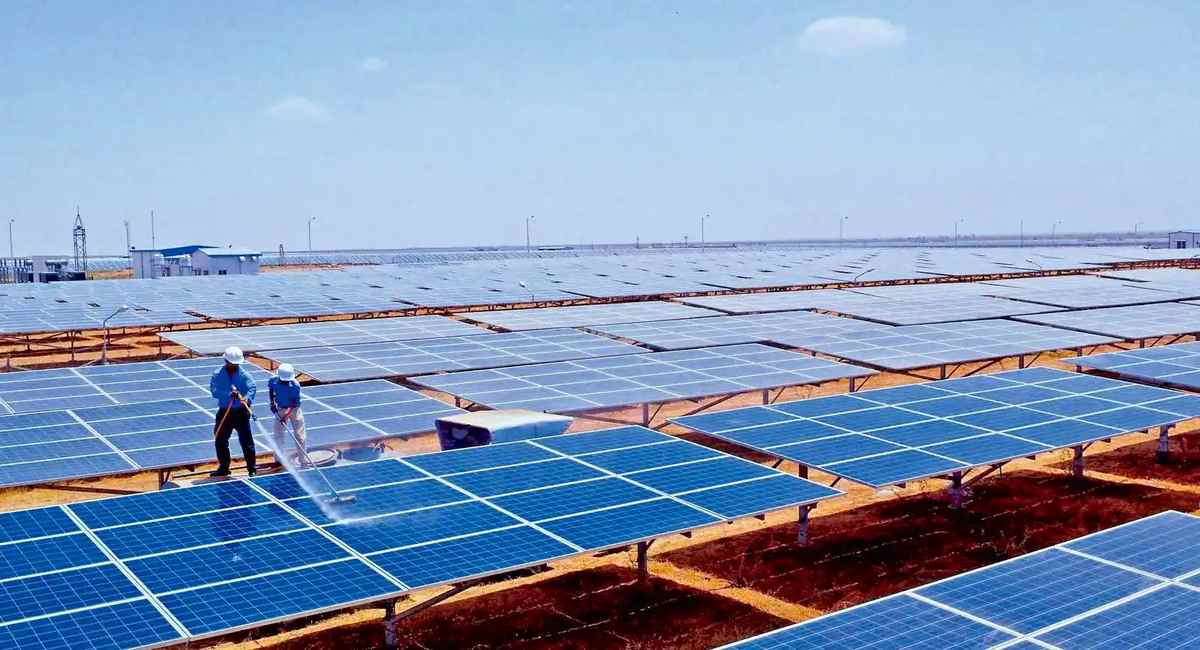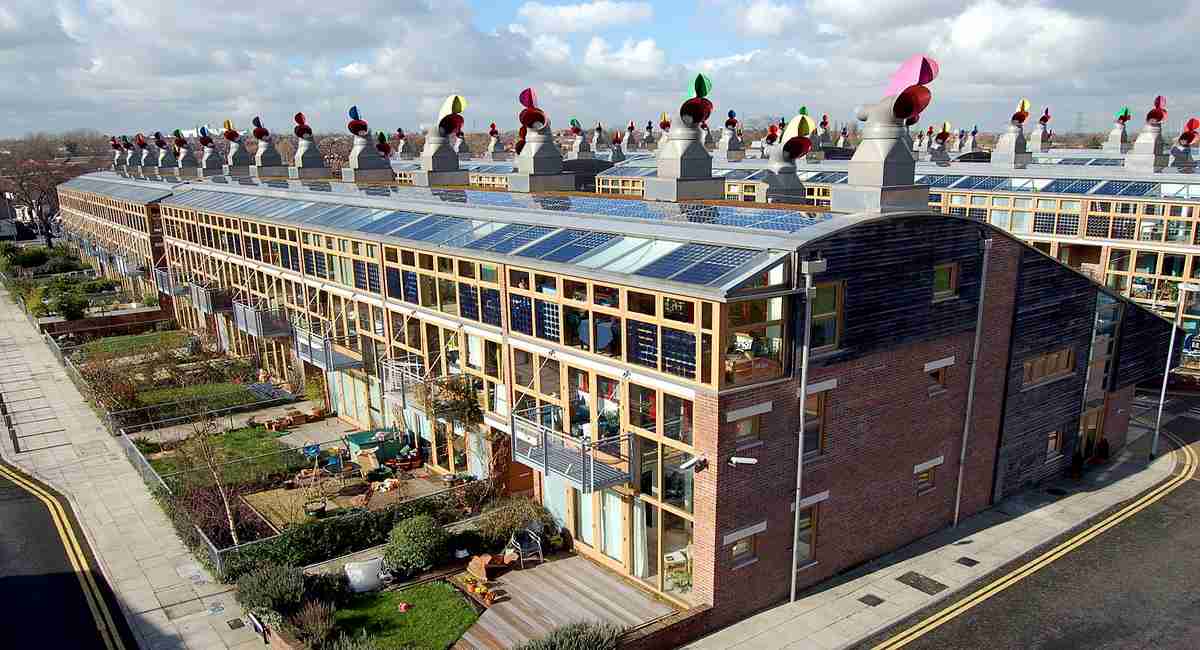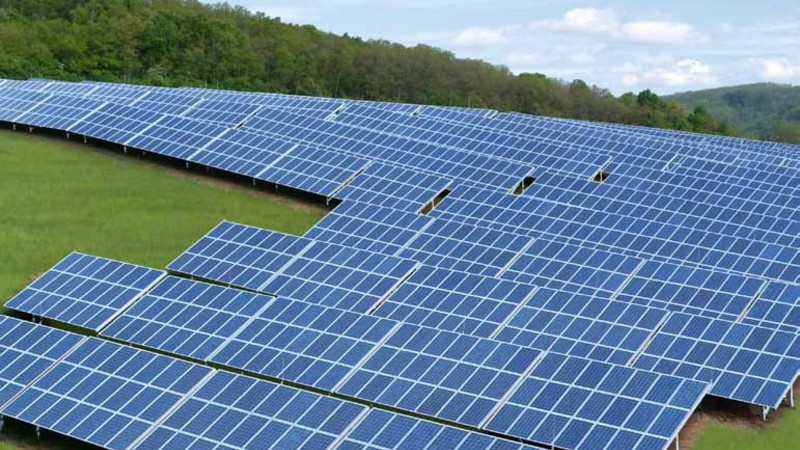Why Are The Sales Of Solar Panels Booming In The UK Currently?

Introduction:
Solar PV power is a renewable energy source that uses sunlight to generate both heat and electricity. The system is made up of one or more solar panels, which are then made up of solar photovoltaic cells and a solar inverter. Solar panels may be installed on the roof or on the ground with the assistance of solar software, and a whole plant can range in size from small-scale residential to utility-scale power plants, making this renewable energy particularly appealing to modest households.
The British government's policy initiatives, like the Feed-in Tariff, which operated from April 2010 to March 2019, are meant to promote investment not just by corporations but also by individual homes. Until March 2019, the bulk of solar PV capacity added under the Feed-in Tariff was either new or retrofitted plants with a capacity of less than four kilowatts. The strategy had a significant impact on the successful proliferation of solar power facilities around the country. The number of solar PV sites increased 52-fold between 2009 and 2011, when it was initially made available, indicating strong popular support for the energy type.
Since 2004, photovoltaic electricity and heat production in the United Kingdom has increased year after year, reaching 12,857 gigatonnes in 2018. Production is expected to peak in the early 2030s, when many of the solar panels installed during the boom will have reached the end of their useful life.
England has by far the most solar capacity in the UK, with 11,387 megawatts installed as of 2018.
The Solar PV Potential In UK:
The annual solar output in the United Kingdom ranges between 750 and 1,100 kilowatt-hours per square meter (kWh/m2). In December and July, London receives 0.52 and 4.74 kWh/m2/day, respectively. While the sunnier portions of the UK get far less solar radiation than the sunnier parts of Europe, insolation in the south is equivalent to that of central European nations such as Germany, which generates roughly 7% of its electricity from solar power. Furthermore, the greater wind speeds in the UK cool PV modules, resulting in better efficiency than would be predicted at these levels of insolation. The Department of Energy and Climate Change (DECC) in the United Kingdom estimates a capacity factor of 9.7 percent for solar photovoltaics.

According to Derry Newman, CEO of Solarcentury, the UK's "famously cloudy weather does not make it an inappropriate location for solar electricity, as solar panels run on daylight, not necessarily direct sunshine." Some solar cells perform better in direct sunlight, while others benefit from more diffuse light. While insolation rates in England are lower than in France and Spain, they are still usable.
UK Photovoltaic Market:

During the projected period, the UK solar power market is predicted to grow at a CAGR of more than 5%. (2022–2027). The COVID-19 pandemic in the United Kingdom led to a rapid drop in domestic demand and the temporary stoppage of industrial activity, resulting in serious economic repercussions, particularly during the first half of 2020. Furthermore, solar panel producers saw a large drop in H1 2020 compared to 2019. Encouragement of government regulations and demand for renewable energy sources to reduce reliance on fossil fuels and carbon footprints are important contributions to market growth. The solar power business is also being driven by falling solar technology costs and more solar system subsidies. However, factors such as limited land and demand for alternative renewable energy sources are expected to suppress the growth of the UK solar power market during the forecast period.
The residential sector in the United Kingdom has been expanding, with widespread acceptance in all countries, which is projected to boost the market throughout the projection period.
The government has set lofty goals for solar electricity, with a goal of reaching 40 GW of installed capacity by 2030. This element is predicted to provide opportunities for solar power firms in the future.
During the forecast period, the UK solar power industry is likely to be driven by falling small-scale solar PV installation prices.
UK Government Solar Energy Policy:
Solar power was a very small part of electricity production in the United Kingdom until the 2010s, when it grew rapidly due to feed-in tariff (FIT) subsidies and falling PV panel costs.
As of June 2021, installed capacity is over 13.5 gigawatts (GW), with the 72 MW (DC) Shotwick Solar Farm being the largest in the UK. In 2020, annual generation was slightly less than 13 TWh (4.1 percent of the UK's electricity consumption). Peak output was less than 10 GW. In the UK climate, solar PV panels have a capacity factor of around 10%.
The Energy Saving Trust, which administers government grants for domestic photovoltaic systems through the Low Carbon Building Programme, estimates that an installation for an average-sized house would cost between £5,000 and £8,000, with most domestic systems typically ranging from 1.5 to 3 kWp and yielding annual savings of £150 to £200 (in 2008). Solar panels will be installed in 100 schools across the UK as part of the Green Energy for Schools programme. The first school in Wales was at Tavernspite in Pembrokeshire, and it received £20,000 in solar panels, enough to generate 3,000 kWh of electricity per year.
In April 2010, the UK government agreed to pay for all grid-connected generated electricity at an initial rate of up to 41.3 pence (US $0.67 per kWh) regardless of whether it was used locally or exported. The rates proved to be more appealing than necessary, and in August 2011, they were drastically reduced for installations larger than 50 kW, a policy change that was criticised as heralding "the end of the UK's solar industry as we know it." The government adjusts the feed-in tariff rates on an annual basis. As of the 8th of February 2016, the rate is 4.39 pence per kWh of power generated for domestic systems of 4 kWp (p means peak, i.e. the maximum power that the system can produce) or less and where homes meet the minimum EPC requirement of band D. The export tariff is 4.85 pence per kWh exported to the grid. For domestic installations, the amount of electricity exported is not usually measured. It is calculated on the assumption that 50% of the electricity produced is exported to the grid.
On July 19, 2018, the Department of Business, Energy, and Industrial Strategy (BEIS) issued a consultation. They stated in this that they intend to close the FIT scheme to new applicants on April 1, 2019 and not replace it with a new subsidy.
The principles which forms the government's strategy for solar PV include:
- Support for solar PV should enable cost-effective projects to move forward and make a cost-effective contribution to UK carbon emission objectives in the context of overall energy goals, ensuring that solar PV plays a role alongside other energy generation technologies in delivering carbon reductions, energy security, and affordability for consumers.
- Support for solar PV should result in genuine carbon reductions that contribute to the UK's target of 15% renewable energy from final consumption by 2020, as well as to the long-term decarbonization of our economy—ensuring that all carbon impacts of solar PV deployment are fully understood.
- Support for solar PV should ensure that proposals are appropriately sited, that environmental considerations such as landscape and visual impact, heritage, and local amenity are given proper weight, and that local communities have opportunities to influence decisions that affect them.
- Solar PV support should assess and respond to the effects of deployment on grid system balancing, grid connectivity, and financial incentives – ensuring that we address the challenges of deploying large amounts of solar PV.
Solar Energy Capacity In UK:

The UK currently produces 13,258 megawatts of electricity per year, enough to power approximately three million homes across the country. This represents a significant increase over the 5,488.6 megawatts produced in 2014. There is some concern that solar panel capacity will reach a halt in 2020, but as the IEA has stated, the COVID-19 pandemic will undoubtedly have an impact.
However, as the pandemic subsides, the UK is expected to increase solar panel capacity in line with its goal of reaching net-zero by 2050. In fact, the IEA predicts that the capacity of solar panels in the UK will nearly triple by 2030.
This would result in a significant 4.7 percent reduction in the UK's emissions. While this may not appear to be a large sum, it is significant in the context of a greater use of renewable energy sources.
The United Kingdom remains a leader in the transition away from fossil fuels, and its continued adoption of solar panels is impressive – but how does it compare to the rest of the world?
According to data from the International Renewable Energy Agency (IRENA), the United Kingdom is currently ranked 11th in the world for renewable energy generation. That places it behind three other European countries: Spain, Italy, and Germany (ranked 10th, 6th, and 4th, respectively), with Germany far outstripping the UK's solar capacity (at 53,783 megawatts produced per year).
Final Thoughts:
Solar power's popularity in the United Kingdom has spread beyond domestic use to all aspects of society. Panels can now be found in schools, churches, farms, police and train stations, and even bridges. Meanwhile, London generates nearly as much solar power as Madrid, and the industry has enormous job-creation potential. Solar energy is expected to create 50,000 jobs in the UK by 2030, according to experts. The United Kingdom is part of a global trend of increasing installed capacity.
Solar has a promising future in the United Kingdom. Because the United Kingdom is one of Europe's largest markets, it demonstrates how solar is an appealing option regardless of climate.

